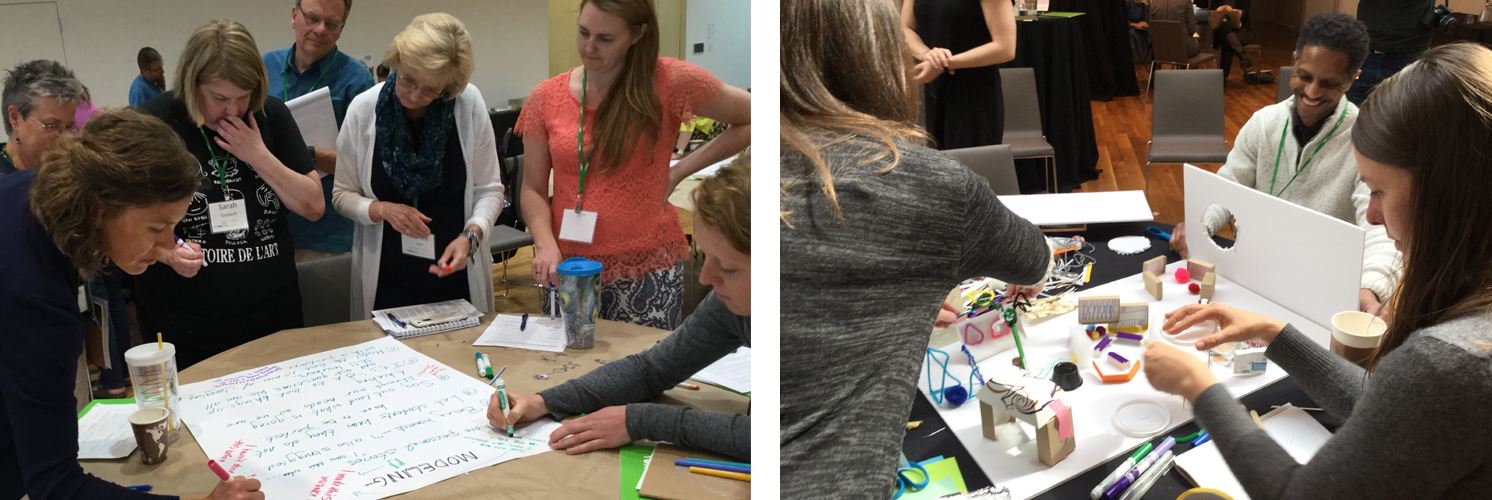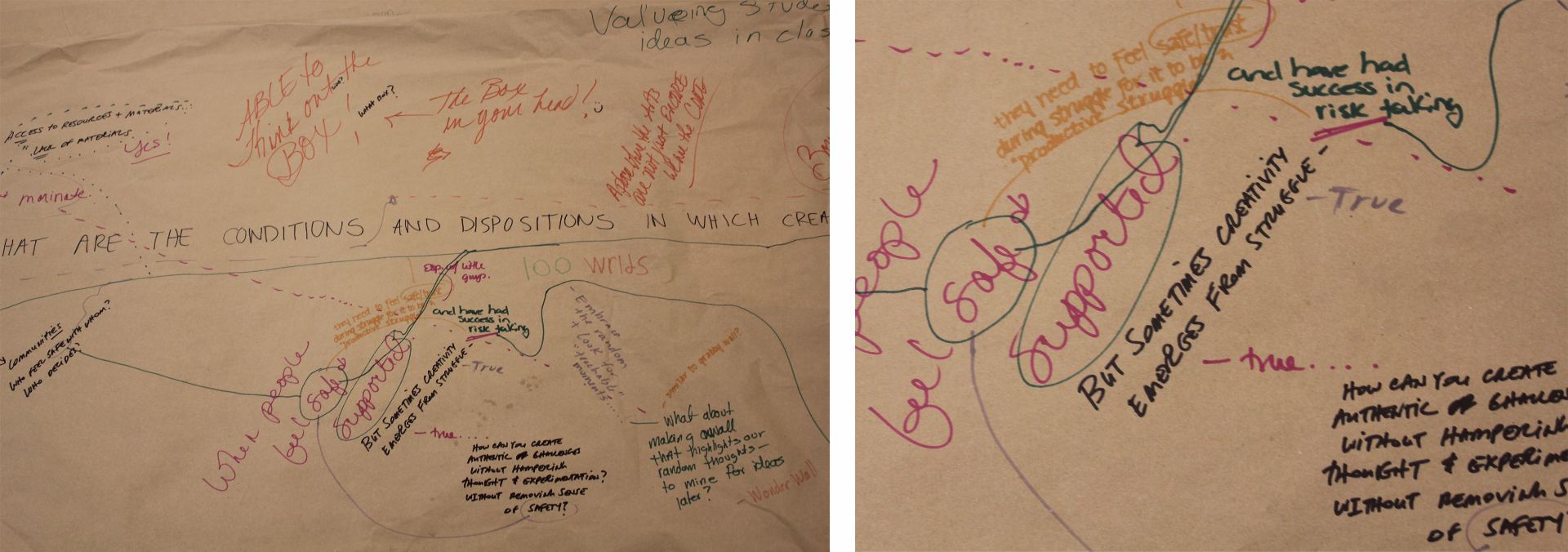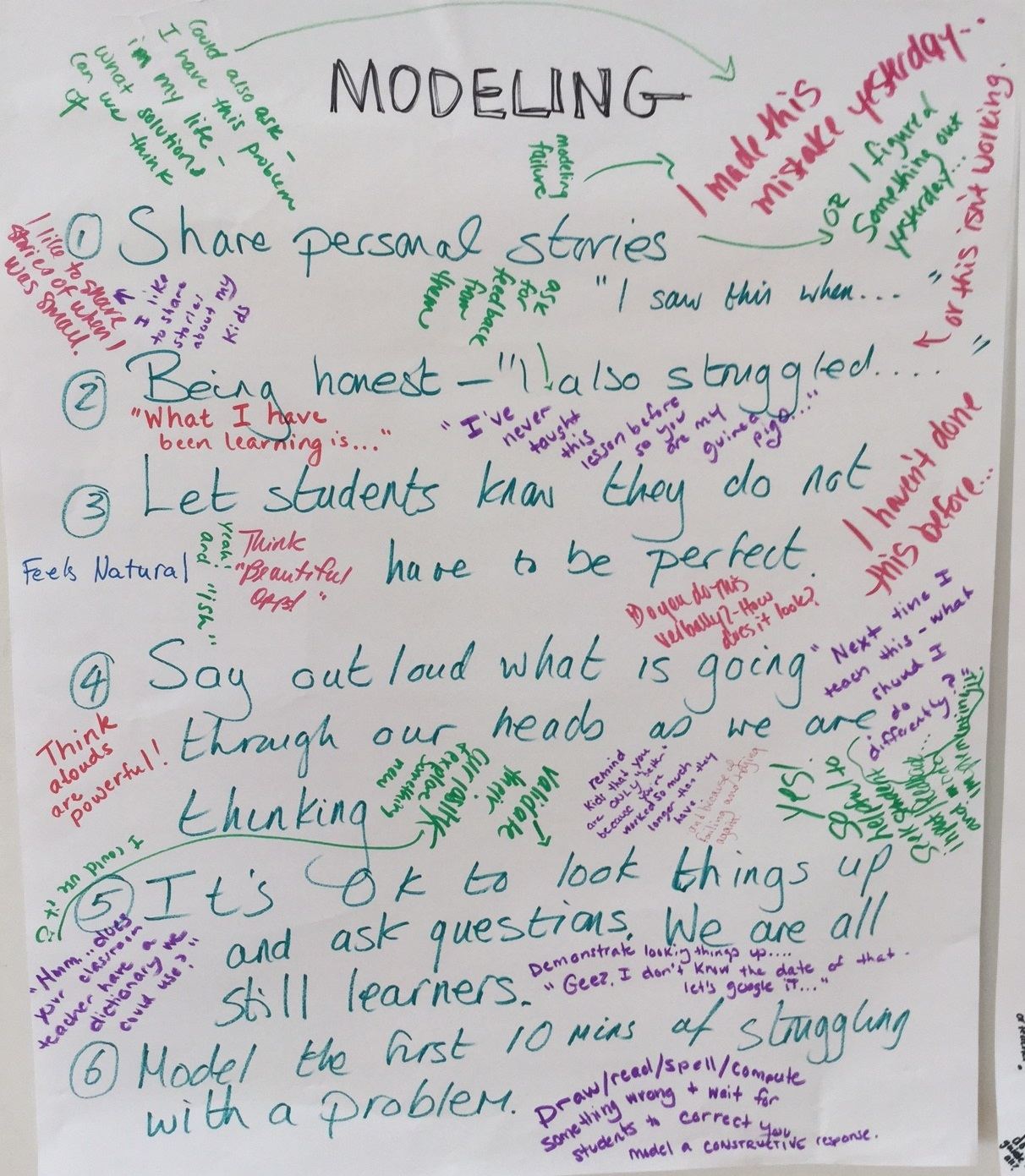
This page contains some tools the MCV team has used to support creativity and documentation with adult learning groups, in particular teacher professional developments. They contain incredibly valuable insights and puzzles from practitioners. They speak to the depth of thinking that can result when teachers have the time, space, respect, and opportunity to engage as creative intellectuals.
We share them here so that you may learn from these teachers’ insights, but more importantly to inspire you in fostering deep thinking within adult learning groups, such as staff meetings, PLCs, or informal groups of “critical friends.”
The Columbus Museum of Art also leads an annual Teaching for Creativity Institute every June, and offers custom educator workshops. For more information on how the CMA can help your team foster creativity, contact jennifer.lehe@cmaohio.org
As with all the MCV tools, we encourage you to try them, tailor them, and share your experiences with the MCV team.
What: Chalk Talk collaborative investigation

From a chalk talk exploration of “What are the conditions and dispositions that support creativity?,” from CMA’s Teaching for Creativity Institute
Why: Making Creativity Visible was designed around principles of group learning, and supporting teachers as researchers investigating creativity through the lens of their own practice and students. A key tool to support this learning was the Chalk Talk. This participatory approach supports authentic learning for participants, and gives the facilitator and participants new insights based on the perspectives and emergent connections made by the group. Moreover, the silent, slowed-down structure of the protocol makes room for all voices, not just the loudest, most confident. The Chalk Talk is an excellent way to foster group learning among individuals of all ages.
How: The Chalk Talk protocol begins with prompts on large pieces of paper. In this case, the prompts were variations on the guiding questions of the initiative,
- What does creativity look like in learning?
- What are the behaviors and conditions that support creativity?
- How might we illuminate, assess, or make creativity visible to others? (i.e. students, parents and colleagues)
Each person is invited to share thoughts, puzzles, and responses to one another’s contributions, in silence. After several minutes, the groups rotate to investigate the next question, and so on. Groups may return to their original, or to the question that interested them the most for a verbal debrief on the topic. It is often useful to debrief on the process as well. This process yielded important insights for Making Creativity Visible, which you can view here: which you can view here. You may also wish to adapt the protocol by using prompts that build on specific aspects of creativity in learning. For example, particularly rich quotations from a Chalk Talk might become the starting prompts for a subsequent Chalk Talk.
What: 8 Cultural Forces Reflection Guide connects teachers to this framework created by Ron Ritchhart of Project Zero. This worksheet engages educators in connecting each of these cultural forces (Expectations, Structures, Time, Modeling, Opportunities, Routines, Interactions, Environment) to their own contexts so that they can influence those forces in support of creativity.

From a Teaching for Creativity investigation of Modeling, one of Ron Ritchhart’s 8 Cultural Forces
Why: The 8 Cultural Forces are conditional factors that are constantly influencing our learning groups. Being aware of each of these forces and being intentional in shaping them can allow teachers to set the conditions in which creativity can thrive. Neglecting the cultural forces can undermine efforts to teach for creativity; similarly, attending to the cultural forces with intentionality can result in a high-impact without adding “another thing.”
How: This guide was developed for use with the chalk talk mentioned above. This means that participants silently engage with written prompts, contributing their thoughts, questions, and responses to the contributions of others. In this case, each prompt uses each of the eight cultural forces; for example, “When you think about [expectations] in your learning context, what comes to mind?” Groups then rotate, expand on and responding to the written investigations of the previous group. This continues depending on time, ending with the group returning to their original force for an open discussion. This marks the close of the Chalk Talk-style; participants then use the table on the worksheet to visit each of the eight sheets and record one thing that stands out to them as highly relevant or interesting from the written discussion, and one thing they will commit to doing to harness this force in support of creativity.
8 Cultural Forces Reflection Guide (click to download editable .doc file)
What: Teacher Interviews with Discussion Prompts
Why: In observing teachers’ practice, the CMA team surfaced many insights into teaching for creativity, as well as puzzles. Closely studying the learners and highly-intentional teachers in classrooms in which creativity thrives piqued our interest in probing further into what we noticed and wondered. Discussing these interview clips with other teachers (through CMA teacher professional development) invited them into this investigation of what creativity looks like in learning, and what teacher moves support creativity.
How: Many of these videos are embedded with reflection prompts and questions to generate discussion even without a formal facilitator. They are designed for group conversation about key ideas relevant to creativity in learning. Watch theses videos with fellow educators to prompt discussion and emergent insights into fostering creativity in education.
Teachers engaged in play, and reflecting on what they experienced and learned:
Amanda Waluzak and her students, practicing and reflecting on the same creativity challenge:
Britanie Risner, on inviting families and students to define the worthy outcomes of education:
Jason Blair, on making the time for thinking:
Marcella Cua Homan and her high school digital art class, practicing and reflecting on a creativity challenge:
Emily Reiser, on what creativity looks like in her classroom:
Emily Reiser, on ways to support student creativity in the physical environment of the classroom:
Emily Reiser, on the value of student self-assessment:

